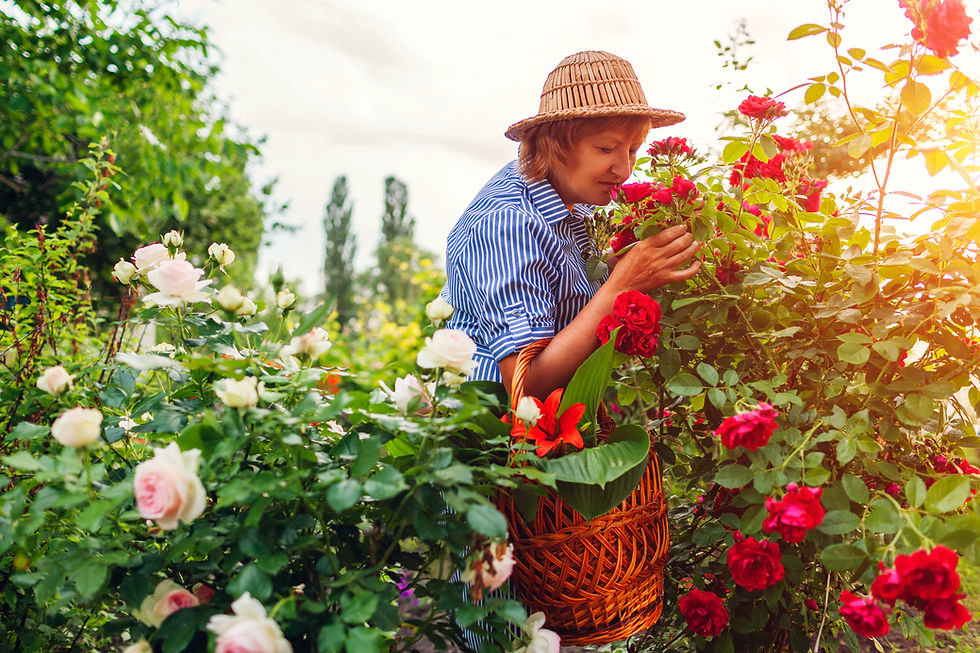Better Together
- Cynthia Dano

- May 31
- 3 min read
Updated: Jun 9

by Cynthia Dano
Hello and welcome (or welcome back!) I am a two-time cancer survivor, Wellness and Radical Remission coach, and cancer mentor, what I like to call a Cancer Doula. In that capacity, I help others navigate their cancer journey by helping them implement healing strategies into their lives.
In these blogs, I will pass on some tips or info that have been useful for me or my clients.
In March, I spoke to a local cancer support group on the topic of ‘Support”. I thought I would share some of the highlights with you for you to explore support in your life. Let’s jump in!
What science has found is that social support is good for our health…and never more so than when we are sick.
Social Support = Love
There are 3 aspects to the 'Good For Our Health’ part…
The FIRST ASPECT is: Receiving love helps the body heal.
There is a difference in giving and receiving support and both are important. Here we are talking more about being on the receiving end. There is a large body of evidence that receiving emotional love from others is beneficial to the physical body. Studies have repeatedly shown that people with strong social connections live significantly longer than those with fewer and they also have lower cancer rates. Amazingly the health giving force of social connectionis that is has been shown to be more beneficial that exercise, diet or refraining from drinking and smoking. In close knit communities that regularly eat and relax together, people live longer than average even if they eat fatty foods and don’t exercise much. Of course, when we have a serious health challenge, we want to use ALL of the tools in our toolkit to get healthy, so exercising and eating well are still uber important!
Strong social connections have been shown to significantly lengthen cancer survival
times by an average of 25%! When looked at through MRI, blood, and saliva analyses, receiving love and social support leads to increases in powerful healing hormones such as dopamine, oxytocin, serotonin, and endorphins. These boost the immune system by decreasing inflammation, increasing blood and oxygen circulation, and increasing the number of white and red blood cells, helper T cells, and natural killer cells.
The SECOND ASPECT IS: The goal is not to feel alone/lonely.
This is different for everyone. Loneliness can be a silent killer and is associated with increased cortisol (stress hormone) and a depressed immune profile. Studies have shown that a lack of social connection leads to an earlier death. In one extensive breast cancer study, women who had the fewest social connections before their diagnosis were twice as likely to die of breast cancer than women who started out with strong social connections. SO loneliness can be pretty profound…and not in a good way!
The THIRD ASPECT IS: The importance of physical touch. Hugging, massages, cuddling, putting arm around shoulder (you can give yourself a hug too!) releases the “cuddle hormone” oxytocin is large amounts. This reduces inflammation and pain, decreases blood pressure and cortisol levels, improves digestion (and therefore the absorption of nutrients) and improves immune function.
There was a study done with two groups of rabbits. Both groups were fed high-cholesterol diets, but only one group received daily petting from humans. At the end of the study, the rabbits who received daily petting had 60% less blockage in their arteries than the rabbits who were left in isolation. In humans, hugging for only 10 seconds a day can reduce blood pressure, reduce cortisol, and increase oxytocin. 20 seconds has been found to be very beneficial, and I call it the magic number, so go for 20 seconds! HUGS ARE MEDICINE! In addition to your apple a day, get your hug!
For help with support, contact your local cancer center or reach out online to me or an online support group.
With Big Hugs, see you next time!





Comments